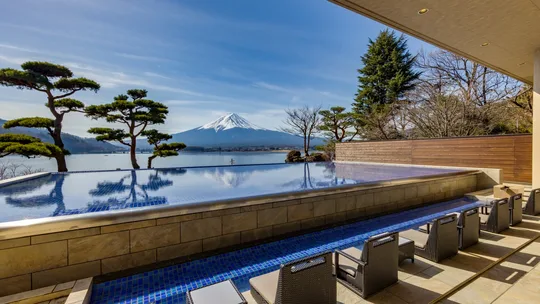The 2023 Blue Ribbon Award and Laurel Award, which are awarded to excellent railway vehicles by the railway enthusiast group “Japan Railfan Club (JRC)”, selected JR Central’s hybrid express train and Kyoto City’s new subway train.

Japan’s fastest hybrid train proudly wins award
The selection committee, who are familiar with rail cars, are nine veterans selected from JRC members nationwide, and the best trains were selected based on the results of voting by the members. Eligible rolling stocks are newly built or modified ones that started commercial operation between January 1 and December 31 of each year. This year’s candidate vehicles are 13 series/types, an increase from last year’s 5 series/types.
Japan Top Onsen Hotels Recommendation – Klook
The “HC85 series” of JR Central, which started commercial operation as a limited express “HIDA” on the Takayama Line on July 1, 2022, was selected as the best train car “Blue Ribbon Award.” The number of rolling stocks will continue to be increased from this year onwards, and the operating section will be expanded to the Limited Express “NANKI” on the Kisei Line from July 1, 2023.
Developed as a successor train to the existing KIHA 85 series diesel cars, it has achieved the fastest 120km/h operation in Japan as hybrid system train cars equipped with a power generator and storage battery. By halving the number of diesel engines from the 85 series, it was also evaluated for its contribution to reducing environmental impact and noise.
In order to increase the flexibility of organization, the leading car is only a penetrating type, and the policy is changed from the 85 series, which has a leading car that features a front view. The shape of the head is made up of curves with the image of “Japanese”, giving a soft impression that does not make you feel that it is a penetrating shape. The white and orange lines that flow down the side give a sense of dynamism, and the high design is also attracting attention.
The passenger rooms are accessible with universal design, and on the deck there is a space called the “Nano Museum” where traditional crafts along the train line are exhibited. Another reason given for the award is that it is “well-equipped to support modern travel,” such as power outlets at all seats, in-car Wi-Fi service, and space for large luggage.
In addition, new technologies such as bogies with improved reliability and maintainability, in-vehicle security cameras that enable real-time communication, and constant monitoring systems for equipment such as the engine have been incorporated.
The HC85 series received the most votes from JRC members, and the selection committee also highly evaluated that it was suitable for the Blue Ribbon Award from many points of view. This is the first time in 15 years that JR Central won the Blue Ribbon Award together with JR West in 2008 for the Tokaido & San-yo Shinkansen “N700 series.”
(See the chart below for details such as photos of JR Central HC85 series and Kyoto Subway 20 series, past winning history.)
![[Chart] Photos of JR Central HC85 series and Kyoto Subway 20 series, past winning history](https://en.wtmnews.net/wp-content/uploads/sites/3/2023/05/838d8a101f513862ecbc14323d5f68d0.png)
A new face of Kyoto Subway born from citizens’ participation
On the other hand, referring to the voting results, the “Laurel Prize”, which was recognized as excellent after deliberation by the selection committee, was awarded to the “20 series” introduced by the Kyoto Municipal Transportation Bureau on the Karasuma subway line. Developed to replace the 10 series trains that have been in operation since the opening of the Karasuma Line in 1981, and the first train set entered commercial operation on March 26, 2022. Currently, 3 trains are in operation, and it is said that additional trains will continue to be added at a pace of 2 trains per year.
In designing the train, design experts and citizens recruited by the public served as committee members, and a wide range of discussions were held to formulate a clear design concept. The final draft of the design was determined by votes from citizens and users, and the point of evaluation is that efforts were made to involve citizens as a public transport operator.
The exterior and interior design make brilliant use of the materials and techniques used in Kyoto’s traditional crafts. For example, the standing seats in the “Omoiyari Area”, which accommodates the use of wheelchairs and strollers, are an exhibition space unique to Kyoto, such as “Nishijin brocade” and “Kiyomizu ware”, which differ for each formation and car. In addition, Kyoto-ness is sprinkled in the “Kugikakushi” at the upper part of the passage, “Kitayama Maruta” and “Kyo Kumihimo” for the hold on straps.
One of the design concepts is “a subway unique to Kyoto”, and the people involved in traditional industries who want to promote the industry as much as possible and the transportation bureau’s desires have come together to realize these collaborative creations.
The reason for the selection is written as “an excellent train cars that combines the latest technology and the characteristics of Kyoto.” The perfection of rolling stocks has also been highly evaluated, such as the front design with a near-future image, accessible features such as reduced steps from the platform, and inbound support such as multilingual guidance displays.
This is the first time for the Kyoto Municipal Transportation Bureau to receive the Blue Ribbon Award or the Laurel Award. The 20 series has also been selected as the “2022 Good Design Award” by the Japan Institute of Design Promotion, and has achieved the feat of winning double awards.




 [JR Pass] Japan Takayama-Hokuriku Area Tourist Pass including the Hokuriku Shinkansen bullet trains and buses to Shirakawago (Delivery to Multiple Countries) (Ad by KKday)
[JR Pass] Japan Takayama-Hokuriku Area Tourist Pass including the Hokuriku Shinkansen bullet trains and buses to Shirakawago (Delivery to Multiple Countries) (Ad by KKday)



